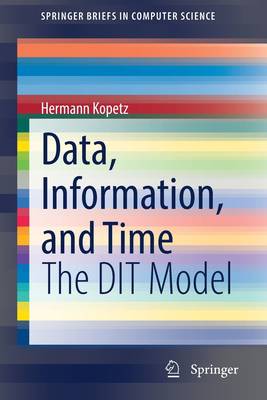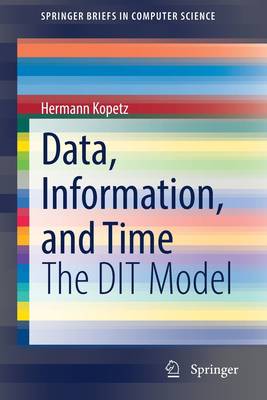
- Afhalen na 1 uur in een winkel met voorraad
- Gratis thuislevering in België vanaf € 30
- Ruim aanbod met 7 miljoen producten
- Afhalen na 1 uur in een winkel met voorraad
- Gratis thuislevering in België vanaf € 30
- Ruim aanbod met 7 miljoen producten
Zoeken
Omschrijving
This SpringerBrief presents the data- information-and-time (DIT) model that precisely clarifies the semantics behind the terms data, information and their relations to the passage of real time. According to the DIT model a data item is a symbol that appears as a pattern (e.g., visual, sound, gesture, or any bit pattern) in physical space. It is generated by a human or a machine in the current contextual situation and is linked to a concept in the human mind or a set of operations of a machine. An information item delivers the sense or the idea that a human mind extracts out of a given natural language proposition that contains meaningful data items. Since the given tangible, intangible and temporal context are part of the explanation of a data item, a change of context can have an effect on the meaning of data and the sense of a proposition.
The DIT model provides a framework to show how the flow of time can change the truth-value of a proposition. This book compares our notions of data, information, and time in differing contexts: in human communication, in the operation of a computer system and in a biological system. In the final Section a few simple examples demonstrate how the lessons learned from the DIT-model can help to improve the design of a computer system.
The DIT model provides a framework to show how the flow of time can change the truth-value of a proposition. This book compares our notions of data, information, and time in differing contexts: in human communication, in the operation of a computer system and in a biological system. In the final Section a few simple examples demonstrate how the lessons learned from the DIT-model can help to improve the design of a computer system.
Specificaties
Betrokkenen
- Auteur(s):
- Uitgeverij:
Inhoud
- Aantal bladzijden:
- 75
- Taal:
- Engels
- Reeks:
Eigenschappen
- Productcode (EAN):
- 9783030963286
- Verschijningsdatum:
- 18/03/2022
- Uitvoering:
- Paperback
- Formaat:
- Trade paperback (VS)
- Afmetingen:
- 156 mm x 234 mm
- Gewicht:
- 136 g

Alleen bij Standaard Boekhandel
+ 105 punten op je klantenkaart van Standaard Boekhandel
Beoordelingen
We publiceren alleen reviews die voldoen aan de voorwaarden voor reviews. Bekijk onze voorwaarden voor reviews.











